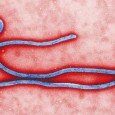By Rabia Ahmed –
The Burn and Children Care Charity Organisation (BCCCO) deserves generous appreciation and help
The Mayo Hospital is located on Hospital Road, at the time of its construction in 1870 a peaceful street in the midst of a beautiful town. It is now a dirty, overcrowded road with all the attendant pollution, not a salubrious location for sick persons. The hospital is housed in its original buildings with subsequent additions, including a burns unit within the department of plastic surgery. That burns unit at Mayo Hospital is the only burns unit in a city of over eight million people. It is located on the third and part of the second floor of the department of Accident and Emergency and can be accessed either by a flight of stairs, whose walls are splattered with paan stained spittle, or by a lift whose walls are also splattered with paan stained spittle.
It was freezing cold the day I visited this ward. The landing outside the ward was full of patient relatives (take that as a pun), seated or lying on mattresses. Children accompanying these attendants crawled on unbelievably dirty floors. Sanitation is clearly not a priority for this hospital but it is also a luxury for the burns ward which leads a precarious existence fighting eviction, shortage of funds, and trained ancillary staff.
 Dr Omer Nazir, a medical registrar showed me around the burns unit which is divided into several sections. The pediatric ward is occupied by children and their mothers. Some of these children have undergone surgery to correct cleft palates, others are survivors of burns which occur all too often in the overcrowded conditions in which most people live in this country. A small boy adjusted his jacket with raw hands before allowing me to photograph him. An even smaller girl opposite stared apathetically at me out of one small eye, the other lost in a turban like bandage covering burns on her head.
Dr Omer Nazir, a medical registrar showed me around the burns unit which is divided into several sections. The pediatric ward is occupied by children and their mothers. Some of these children have undergone surgery to correct cleft palates, others are survivors of burns which occur all too often in the overcrowded conditions in which most people live in this country. A small boy adjusted his jacket with raw hands before allowing me to photograph him. An even smaller girl opposite stared apathetically at me out of one small eye, the other lost in a turban like bandage covering burns on her head.
The walls of the pediatric ward are brightly painted. Dr Nazir told Pique these were commissioned by a non-profit organisation, the Burn and Children Care Charity Organisation (BCCCO). ‘They also donated that,’ he said, pointing to the split air conditioner above the door and said that the bathrooms throughout the unit had been renovated and much of the equipment also donated by the same group. A special tub donated by them is used to remove exudate from the wounds which if left on the skin hardens and causes terrible deformities and infection.
‘The BCCCO donates medicines and equipment worth one to two lacs to our ward every month,’ Dr Nazir said.
The burns ward at Mayo receives no government funding, which, considering the over a thousand burn victims presenting here every year poses questions regarding government priorities.
To find out more about an organisation that makes this crucial donation every month I visited Samina Afzal who is now the President of the BCCCO.
 ‘This group was started twelve years ago by Samina Manzar,’ Samina told me, ‘and it now has around a hundred and fifty members, mostly housewives. We hold a general body meeting every month to discuss requirements and collect monthly dues.’
‘This group was started twelve years ago by Samina Manzar,’ Samina told me, ‘and it now has around a hundred and fifty members, mostly housewives. We hold a general body meeting every month to discuss requirements and collect monthly dues.’
With these dues and other donations from both members and non members the BCCCO has also provided a filter plant, food and clothing during the earthquake in 2005. But their real mission is to support the burns ward at Mayo, whose other major support comes in the shape of two meals a day for the patients and an attendant provided by the Gourmet group of bakeries from their kitchen on the hospital premises.
The burns ward was in terrible shape twelve years ago. Bit by bit the BCCCO renovated the premises, provided air conditioners, a kitchen, and set up a small and separate ICU, a mini emergency and an operation theatre. In addition to the medicines they donate they try not to turn down any special request for additional medication or equipment.
The BCCCO offers support to patients only, in itself a remarkable and important feat. It is unable to help the patients’ families for whom support is also sorely required, especially if the burn survivor is the sole bread winner. In the case of serious burn injuries in particular, the period of treatment and then convalescence is very long.
Ali (names have been changed) was a forty year old donkey cart driver from Kamoki who was burnt in an accident between his cart and a tractor. He received burns to eighty percent of his body. Not knowing what to do with him his relatives left him in a corner to die where a friend found him a week later. The friend took him to the burns unit at Mayo hospital where Ali’s nose and his hands were painstakingly reconstructed. Ali is now working as a donkey cart driver again. He was in the hospital for an entire year.
‘The doctors at the ward are excellent,’ Samina said. ‘Some of them have resigned from jobs in other countries to work in Pakistan.’
 Pakistan needs such people, its issues are so daunting. Of the male patients treated at the burns ward most are survivors of accidental burns. But almost half the female patients have been deliberately burnt.
Pakistan needs such people, its issues are so daunting. Of the male patients treated at the burns ward most are survivors of accidental burns. But almost half the female patients have been deliberately burnt.
Maria was a first year medical student who took the bus to medical college every day and looked forward to a career as a medical practitioner. One day she received a proposal of marriage which was not accepted. Angry at the refusal the young man threw acid on Maria as she waited for the bus, burning her beyond recognition. After several months in hospital Maria is still undergoing re-constructive surgery but she has returned to medical college.
Fouzia was doused with petrol and set on fire by her husband because she would not make over her property to him. She suffered agonising burns but the worst of her suffering resulted from her own children shrinking from her, she was so badly disfigured. She was hospitalised for six months.
Burn survivors require special equipment. Among the items donated by the BCCCO is a special fluidized bed costing over fifty lac rupees, with a mattress containing sodalime beads. The soft, cool beads cause minimum pressure and absorb the exudate from burn wounds which would otherwise prevent the wound from drying and cause infection.
 Burns survivors also require specialised care. ‘We need a full time trained anaesthetist for the ventilator and also nurses trained specially to care for burns,’ Dr Nazir says.
Burns survivors also require specialised care. ‘We need a full time trained anaesthetist for the ventilator and also nurses trained specially to care for burns,’ Dr Nazir says.
A surgical tower is being constructed on the premises since 2006, and it is not yet complete. Whenever it is, the department of plastic surgery is to get the top floor, and will share the premises with the burns unit. That burns unit will include hydrotherapy, and an ICU equipped with a ventilator, and separate wards for acute and chronic burns.
Let us pray for that happy outcome, and work towards it.
The BCCCO may be contacted at: [email protected].































































































